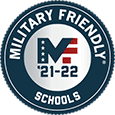The Tower crane is unlike any other type of crane. It’s stronger, taller, and stationary, making it ideal for constructing tall structures and skyscrapers.
Tower cranes are assembled piece by piece on site and broken down upon project completion. Each part of the Tower crane serves a purpose, whether it be stabilizing the crane, allowing it to lift, or allowing it to rotate while holding heavy objects and materials.
As a Tower crane operator, you need to know how these parts come together before you can safely operate the equipment. Explore more helpful information and learn how to operate a tower crane through our tutorial.
Types of Tower Crane
Luffing Jib Crane
This type of Tower crane uses a jib with a hook fixed to its end. You can position the hook by luffing the jib up and down. The jib is set at a higher boom angle when not being used, which may reduce the radius needed for weathervaning to less than half of the maximum possible reach. This makes the luffing jib crane ideal for tight spaces.
Hammerhead Tower Crane
To position the hook, a hammerhead tower crane uses a fixed, horizontal job and a trolley assembly traveling the length of the jib. Hammerhead tower cranes are ideal in situations where other cranes may be using the same air space. You may see some hammerhead tower cranes using pendant lines between the jib or counter jib and a tower top assembly. Others use a flat-top design with no tower top or pendant lines.
Self-Erecting Crane
For smaller or brief projects, a self-erecting crane can be a more efficient solution. Smaller than most other Tower cranes, a self-erecting crane doesn’t require assembly by other cranes or heavy equipment. Instead, this type of crane uses hydraulic power to extend its mads and unfold its jib. However, self-erecting cranes cannot be tied to structure and have a limited hook range.
Safety Hazards in Tower Crane Operation
To remain safe and to keep other workers safe, keep safety top of mind. Learn more about Tower crane safety and how you can avoid common hazards.
Parts of a Tower Crane
Concrete Pad
A Tower crane cannot lift, rotate, and position materials unless it’s completely stabilized. That’s why Tower cranes are bolted down to a large concrete pad weighing upwards of 400,000 pounds.
Turntable
The turntable allows the crane arm to rotate. It also gives the job a wider range of motion.
Mast
The mast is a tower that can reach around 265 feet or higher. It supports several parts of the crane, like the cab, hook, and counterweights.
Slewing Unit
The mechanical component sitting atop the mast is the slewing unit. This part allows the crane to rotate.
Jib
Also called the working arm, the jib is a long arm extending from the crane. The jib is responsible for supporting and positioning the load.
Counter Jib
Extending in the opposite direction of the jib is the counter jib. This part helps the crane stay balanced while in operation.
Operator’s Cab
This is where you’ll see and operate from. Inside the cab are the computer and joysticks that let you control the crane and safety mechanisms that are meant to keep you safe.
Your Tower Crane Operation Tutorial
Once you’re certified to operate a Tower crane, you’ll begin each day by climbing up the ladder to the cab. Before operating, you should also give the crane inspection and check your surroundings for any potential hazards.
Step 1: Once in the cab, you’ll use radio or hand signals to communicate with your crew.
Step 2: You’ll also need to monitor wind speed before and during the lift as well as weight capacity limits.
Step 3: Using tower controls, lower the rope and hook so it may be attached by the crew below.
Step 4: Once the hook is in position, the crew will securely rig the load to the hook, using basic physics to ensure it’s stable.
Step 5: Using the joysticks, you can hoist the load, raising the load and rope. You can also spin the crane and trolley travel to move the load along the jib.
Read our other content Here:
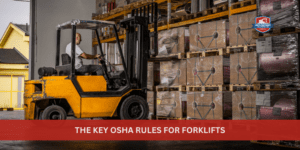
The Key OSHA Rules for Forklifts
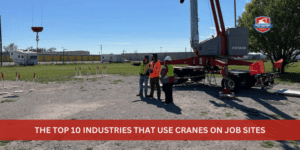
The Top 10 Industries That Use Cranes on Job Sites
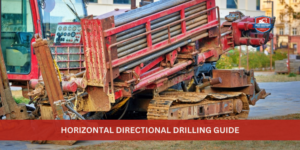
The Complete Industrial Guide to Horizontal Directional Drilling
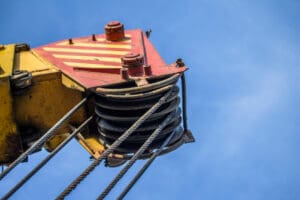
The Hazards of Crane Two-Blocking and How to Mitigate Them

What Does It Mean to Weathervane a Crane?
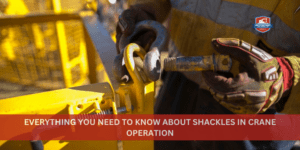
Everything You Need to Know About Shackles in Crane Operation
Tower Crane Operation Safety Guidelines
Tower cranes are massive, powerful machines. However, a large gust of wind, overloading, and poor maintenance can quickly turn a simple lift into a disaster. For that reason, you need to take the Tower crane operation seriously. That includes following OSHA guidelines and wearing personal protective equipment (PPE), and always adhering to crane limits.
How To Become a Tower Crane Operator
If you’re at least 18 years of age and meet the physical/medical requirements, all you need to do is find training and certification. Look for a crane operator training school that’s National Commission For the Certification of Crane Operators (NCCCO) accredited.
Find Tower Crane Operator School Near Your Area
Interested in becoming a Tower crane operator but worried it’ll take forever? At Heavy Equipment Colleges of America (HEC), you can get the safety training and hands-on experience you need to start a career as a Tower crane operator—in as little as two weeks. Learn more about our program here.



